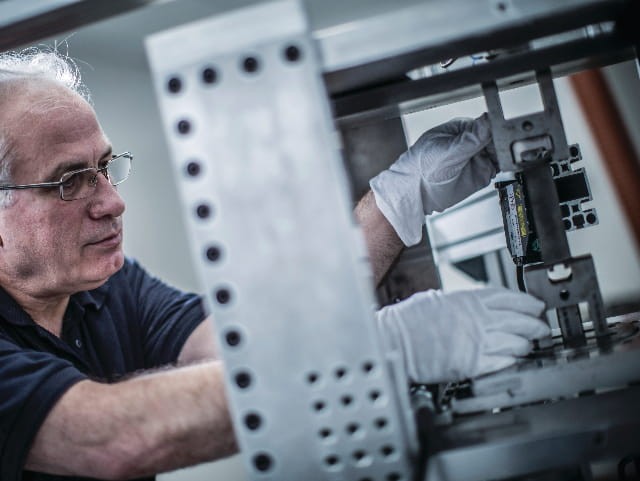Introduction
As industries push for lightweight, durable, and high-performance materials, composite materials—especially carbon-fiber and glass-fiber reinforced plastics—have become essential. However, understanding how these materials behave over time under cyclic loads is vital. That’s where composite fatigue testing comes into play.
This article provides a complete guide to composite fatigue testing, exploring its purpose, methodologies, equipment, standards, and importance across industries such as aerospace, automotive, civil engineering, and renewable energy.
What Is Composite Fatigue Testing?
Composite fatigue testing is the process of subjecting a composite material specimen to repeated (cyclic) loading to assess how it degrades over time. Unlike metals, composites show complex damage mechanisms under fatigue, such as matrix cracking, delamination, and fiber breakage.
Goal of fatigue testing:
To determine how many cycles a composite material can withstand before failure under specified loading conditions (stress, strain, or displacement).
Why Is Fatigue Testing Critical for Composites?
1. Safety Assurance
Composite components in aircraft, wind turbines, or bridges must endure millions of load cycles over years. Fatigue testing ensures their reliability and structural integrity throughout their service life.
2. Design Optimization
Engineers use fatigue data to optimize the design and select materials that perform best under real-world cyclic loads.
3. Cost-Efficiency
Predicting the fatigue life of composites reduces unexpected failures, lowering maintenance costs and increasing lifespan.
4. Regulatory Compliance
Standards like ASTM D3479 or ISO 13003 demand fatigue testing results before approving composite parts for use.
How Is Composite Fatigue Testing Performed?
Step-by-Step Breakdown
- Sample Preparation
- Specimens are cut according to standards like ASTM D3479.
- Layup configuration, fiber orientation, thickness, and curing conditions are carefully controlled.
- Fixture Mounting
- Test samples are mounted in a servo-hydraulic or electromechanical fatigue testing machine.
- Loading Type
- Tension-Tension
- Tension-Compression
- Bending
- Shear
- Multi-axial loading (advanced)
- Cycle Execution
- The machine applies cyclic loading at set frequencies and amplitudes.
- Frequencies typically range between 1 Hz to 30 Hz, depending on material sensitivity and heat buildup.
- Data Collection
- The number of cycles until failure (Nf) is recorded.
- Intermediate data such as stiffness degradation, crack initiation, and delamination are monitored via sensors or digital image correlation (DIC).
Common Fatigue Testing Methods
1. Constant Amplitude Fatigue Test (CAFT)
This test uses a fixed amplitude of cyclic stress to determine the number of cycles to failure. The result is used to plot an S-N curve (Stress vs. Number of Cycles).
2. Variable Amplitude Fatigue Test (VAFT)
This method simulates real-world conditions by varying the load amplitudes and frequencies to mimic actual service scenarios.
3. Block Loading and Spectrum Loading
This involves applying predefined sequences of load blocks to understand material behavior under complex load conditions (e.g., aircraft wing loading during flight).
Key Parameters in Composite Fatigue Testing
- Stress Ratio (R): Ratio of minimum to maximum load (R = σ_min / σ_max)
- Frequency: Number of load cycles per second
- Load Type: Tension, compression, flexural, torsional
- Cycles to Failure (Nf): Primary metric of fatigue life
- Damage Progression: Internal failure modes such as fiber pullout, matrix cracking
Failure Modes in Composites Under Fatigue
Fatigue behavior in composites is far more multifaceted than metals. Key failure mechanisms include:
- Delamination: Separation of layers due to out-of-plane stresses
- Matrix Cracking: Cracks in resin matrix weakening the load path
- Fiber Fracture: Breakage of reinforcing fibers, usually leading to sudden failure
- Debonding: Loss of adhesion between fiber and matrix
Understanding these mechanisms helps improve damage-tolerant design.
Testing Standards for Composite Fatigue
Several international standards guide the fatigue testing of composite materials:
| Standard | Description |
| ASTM D3479 | Tension-tension fatigue of polymer matrix composites |
| ISO 13003 | Fatigue testing under tension-tension or tension-compression |
| ASTM D7774 | Flexural fatigue of plastics |
| ASTM D5229 | Moisture conditioning before fatigue tests |
| JIS K7077 | Japanese standard for fatigue testing of CFRPs |
Compliance with these standards ensures repeatability and comparability across labs and industries.
Fatigue Testing Equipment for Composites
Modern testing systems for composites are highly advanced. Key components include:
- Servo-hydraulic or electrodynamic load frames
- Load cells for accurate force measurement
- Environmental chambers (for testing at high/low temperature and humidity)
- Extensometers or strain gauges
- Digital Image Correlation (DIC) for real-time surface deformation mapping
Popular fatigue testing systems:
- Instron ElectroPuls™ series
- MTS Landmark systems
- ZwickRoell fatigue machines
Applications of Composite Fatigue Testing
Aerospace
Aircraft wings, fuselage sections, rotor blades – all undergo rigorous fatigue testing to ensure safety and longevity.
Automotive
Composites are used in lightweight frames, suspension arms, and battery enclosures in EVs. Fatigue testing ensures their performance over repeated stress cycles.
Wind Energy
Wind turbine blades must endure millions of stress cycles due to fluctuating wind speeds. Fatigue testing validates design life.
Sports Equipment
Racing bicycles, golf clubs, skis – their performance relies on fatigue-tested composite structures.
Civil Engineering
Bridge decks, reinforcing bars, and retrofitting wraps made from FRPs must pass fatigue standards for structural applications.
Challenges in Composite Fatigue Testing
- Long Testing Time
- Testing to 10⁶ cycles at low frequencies can take days.
- Solution: Use higher frequencies with real-time temperature monitoring to avoid thermal damage.
- Data Interpretation
- Fatigue damage in composites is often internal and not visible externally.
- Advanced NDT techniques like CT scans, ultrasound, and acoustic emission are used.
- Environmental Effects
- Moisture and temperature significantly affect fatigue life.
- Use of environmental chambers becomes crucial for accurate testing.
Future Trends in Composite Fatigue Testing
- AI-Driven Predictive Modeling: Machine learning is being used to predict fatigue life based on fewer tests.
- Multi-Scale Simulation: Combining micro-mechanical and macro models for better accuracy.
- In-Situ Monitoring: Embedded fiber-optic sensors to monitor damage during testing or real use.
- Sustainability Testing: Evaluating the fatigue behavior of recycled or bio-based composites.
Conclusion
Composite fatigue testing plays a critical role in ensuring that advanced materials meet the reliability and performance demands of modern engineering. As composites continue to replace metals in various industries, understanding their fatigue behavior becomes not just beneficial—but essential.
From aircraft wings to wind turbine blades, fatigue-tested composites provide confidence, longevity, and safety in every application. Investing in rigorous fatigue testing today means building smarter, safer, and more efficient products for tomorrow.




